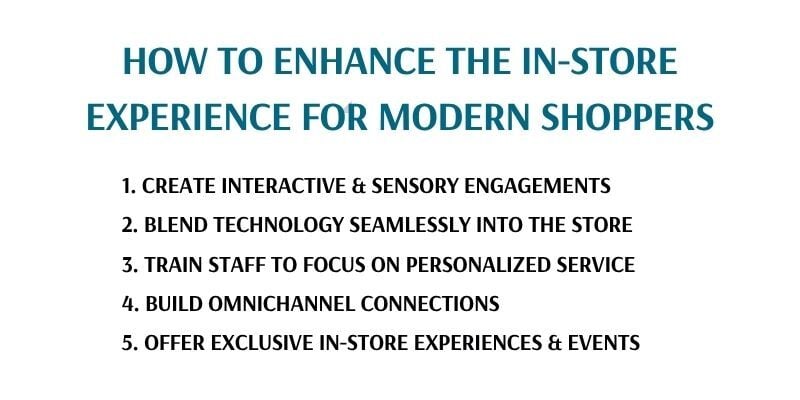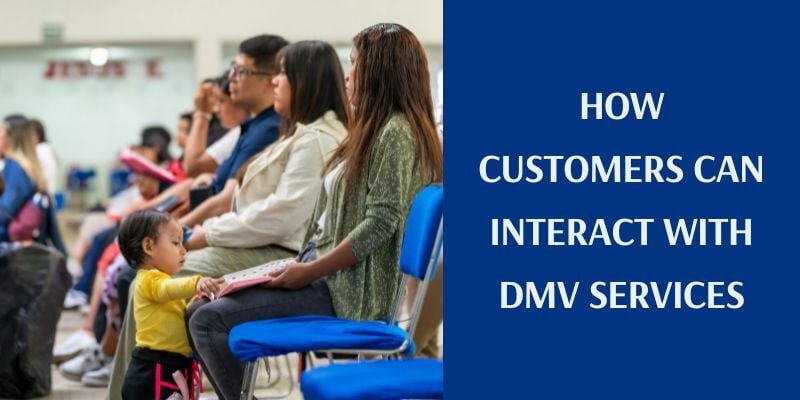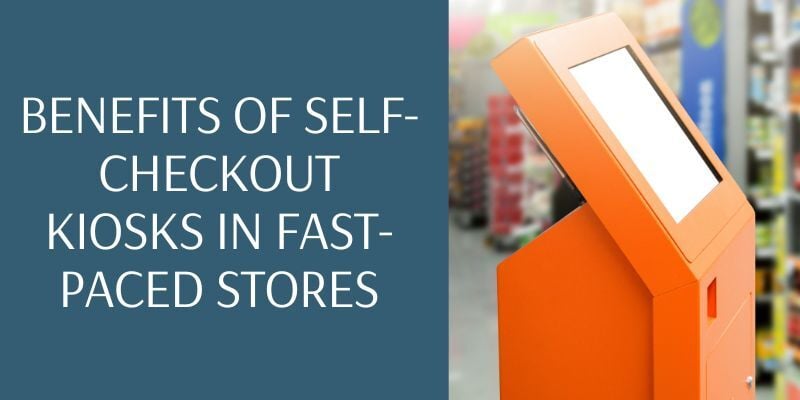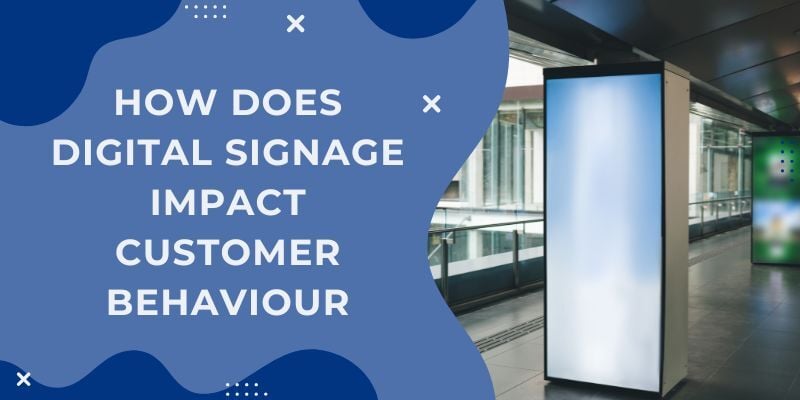Even with e-commerce booming, physical stores aren’t going anywhere. While shopping online is convenient, it still doesn’t compare to the hands-on experience of being in a store.
Shoppers want to touch, feel, and try out products before purchasing — something online shopping can’t replicate. There’s also the aspect of instant gratification; walking out of a store with a product in hand is something e-commerce can’t match.
The importance of in-store experience is evident as consumers seek personalized, engaging shopping moments that make them feel valued. A well-designed store doesn’t just sell products; it creates an atmosphere, tells a brand story, and forms a connection with customers.
It’s about offering more than a simple transaction; it’s about building a lasting impression that keeps shoppers returning.
In this blog, we’ll explore why in-store experiences still matter in an age of e-commerce, how they benefit both consumers and retailers, the challenges businesses face, and how stores can improve their in-store experience to stay competitive.
Key Benefits of a Strong In-Store Customer Experience
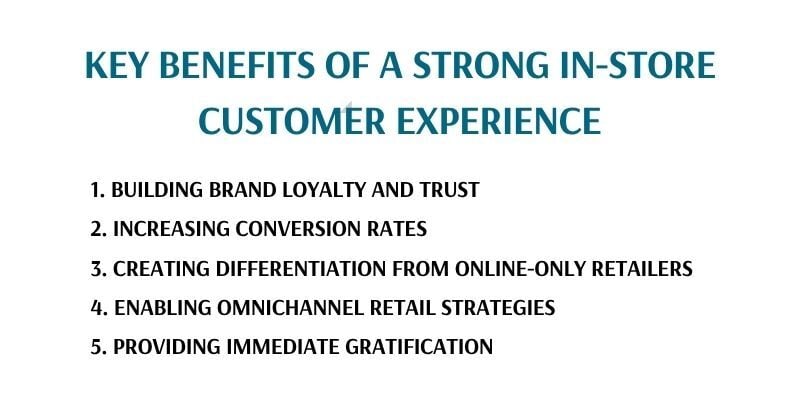
While e-commerce continues to grow, physical stores still offer significant advantages. A well-designed in-store experience can help build customer loyalty, boost sales, and enhance overall retail operations.
Let’s look at the benefits of creating a memorable in-store experience for your customers:
1. Building Brand Loyalty and Trust
Creating engaging, memorable store visits helps build emotional loyalty, something online-only retailers often struggle to replicate.
Customers form a deeper connection with the brand when they have a positive experience in-store, whether through personalized service, hands-on product demonstrations, or an immersive environment.
49% of shoppers prefer a combination of online and in-store shopping, showing that people appreciate the sensory and personal interaction physical stores offer.
Building trust and loyalty in-store can help turn occasional shoppers into repeat customers who feel more invested in your brand and are more likely to recommend it to others.
2. Increasing Conversion Rates
In-store shopping allows customers to interact with products in ways that online shopping simply can’t offer. Touching, feeling, and trying out products firsthand gives customers the confidence they need to purchase.
Research shows that people who experience products in person are more likely to follow through with their buying decision. This interaction reduces the uncertainty of online shopping and leads to higher conversion rates.
Customers with a personalized in-store experience are likelier to make spontaneous purchases or upgrade their selections.
3. Creating Differentiation from Online-Only Retailers
In a marketplace dominated by e-commerce giants, physical stores provide a competitive advantage. While online-only retailers may provide convenience, they can’t replicate the in-person experience that creates lasting impressions.
An engaging in-store experience helps brands differentiate themselves. Whether it’s through interactive displays, exclusive in-store promotions, or personalized customer service, these experiences help businesses differentiate themselves from online competitors.
Implementing a queue management system can improve service flow, reduce wait times, and enhance the overall experience.
Offering something special in-store gives customers a reason to visit your physical location, even when online shopping might be easier or more convenient. Creating a memorable visit turns your store into a destination rather than just a place to shop.
4. Enabling Omnichannel Retail Strategies
The line between online and in-store shopping is increasingly blurred. Recent data shows that 7 out of 10 retail shoppers use multiple channels throughout their shopping journey.
Physical stores are essential for combining online and offline shopping experiences. Shoppers may begin their journey online, but many still prefer to visit a physical store to see, touch, or try the product before making a purchase.
A strong in-store experience ensures customers enjoy a seamless transition between digital and physical channels, improving the overall shopping journey.
Retailers integrating online and in-store strategies provide greater convenience and customer options, ultimately leading to higher customer satisfaction and increased sales.
By improving customer experience in retail stores, brands can deliver a more personalized and engaging experience that encourages repeat visits and positive word-of-mouth.
5. Providing Immediate Gratification
One of the significant advantages of shopping in-store is the ability to provide immediate gratification. Customers who visit a store can leave with a product in hand, which is often a major selling point.
Instant access to products not only satisfies immediate needs but also reduces the uncertainty that comes with waiting for online deliveries. Many customers appreciate the quick turnaround of shopping in a store, especially for items they need immediately or last-minute purchases.
Additionally, the instant availability of products allows retailers to boost impulse and add-on purchases, which are often harder to achieve through online channels.
The ability to meet a customer’s needs on the spot helps create a sense of satisfaction and loyalty that online stores can’t consistently deliver.
Challenges Facing Physical Retail in the E-Commerce Era
Retail stores are facing more pressure than ever. With the rise of online shopping, fewer people are walking into physical locations. Many shoppers choose the comfort of ordering from home, which means stores need more substantial reasons to bring people in.
A powerful physical retail experience helps by offering what online shopping can’t — real human interaction, the chance to try products, and a sense of connection.
At the same time, expectations have grown. Shoppers are used to speed and convenience from websites and apps. When they walk into a store, they expect the same ease.
In this digital age of retail, customers want quick assistance, well-informed staff, and a store environment that feels welcoming and efficient.
Physical retail now has to do more than sell products. It has to create a reason to visit. From in-store events to helpful technology, stores are finding new ways to connect with customers.
These improvements are not just about the customer experience but also help optimize retail operations, making it easier for staff to serve customers well and keep things running smoothly.
How to Enhance the In-Store Experience for Modern Shoppers
Today’s shoppers expect more than shelves and checkout counters. A store visit should feel engaging, efficient, and enjoyable.
That means creating a space where customers can easily explore, connect with the brand, and move through their customer journey. When done well, the in-store experience encourages repeat visits and deeper loyalty.
1. Create Interactive and Sensory Engagements
Shoppers are more likely to connect with products they can physically explore. Try-before-you-buy stations, immersive displays, and interactive product demos help turn casual visits into tactile experiences that engage the senses.
Studies show that customer engagement increases by around 60% when interactive displays are used.
This hands-on environment encourages browsing, learning, and even impulse purchases, ultimately improving in-store engagement and giving people more reason to linger and buy.
2. Blend Technology Seamlessly into the Store
Modern shoppers often expect the convenience of technology at their fingertips, even in a physical setting. Mobile checkouts, digital price tags, smart mirrors, or virtual fitting rooms enhance the shopping flow while reducing friction.
Enhancing brick-and-mortar stores with self service kiosks also streamlines tasks like queueing or payments, allowing staff to focus more on customer interaction. The right tech doesn’t get in the way — it supports a smoother, smarter store experience.
3. Train Staff to Focus on Personalized Service
Technology can improve convenience, but human interaction still matters. Staff who take the time to learn about customer preferences, offer thoughtful recommendations, or remember repeat shoppers create a sense of belonging.
Businesses that personalize experiences have seen consumer spending increase by an average of 38%, with 80% of those companies reporting stronger loyalty.
Training staff to focus on this personalized customer experience helps reinforce brand values while building trust and rapport in every conversation.
4. Build Omnichannel Connections
Retailers need to meet customers wherever they are — online, in-store, or somewhere in between. Offering click-and-collect, curbside pickup, or in-app inventory lookup bridges the gap between browsing and buying.
These features let customers move fluidly between channels, reinforcing a seamless omnichannel experience. When physical stores support digital habits, customers feel more in control and more likely to complete purchases on their terms.
5. Offer Exclusive In-Store Experiences and Events
To draw people in, give them a reason they can’t find online. Pop-up brand activations, loyalty member previews, hands-on workshops, or limited-time events turn regular visits into memorable moments.
These customized events also help stores stand out and become part of a community’s routine. By creating these personal connections, brands turn their locations into destinations, encouraging repeat visits and improving overall store performance.
Real-World Examples of Brands Excelling at In-Store Experiences

Some of the most recognized retailers have turned their physical locations into engaging spaces where shopping becomes an experience. These stores do more than sell products. They bring the brand to life and give customers a reason to return.
1. Apple Stores
Apple Stores are renowned for their minimalist design, open layouts, and emphasis on hands-on product interaction. Customers are encouraged to explore devices freely, and knowledgeable staff are available for expert advice.
The “Today at Apple” sessions offer creative workshops and tutorials, enhancing the in-store experience and building community engagement.
2. Nike Live and Nike House of Innovation
Nike’s House of Innovation stores in New York, Shanghai, and Paris combine digital tools with physical spaces seamlessly. These stores use the Nike app for instant checkout, smart fitting rooms that offer real-time suggestions, and flexible layouts that change with local trends.
Customers can personalize gear at customization zones, making each visit different from the last. Nike Live stores further personalize inventory and services to the surrounding community based on local data and shopper behavior.
3. Lululemon Stores
Lululemon combines retail with wellness by hosting in-store yoga classes, meditation sessions, and community events.
Their stores often feature dedicated spaces for these activities, creating community and encouraging a healthy lifestyle. Personalized fittings and attentive staff further enhance the customer experience.
The Future of Physical Retail in a Digital World
Physical stores are becoming more focused on experience than just transactions. Retailers are starting to use tools like smart shelves that update product availability in real time, AI assistants that help with product questions, and digital displays that adjust based on customer interests.
These additions help make shopping quicker and more helpful for people in the store.
Many stores mix shopping with other elements, like entertainment, product trials, or brand storytelling, giving people a reason to visit. Instead of only buying something, customers might explore new products, learn how to use them, or take part in events.
The future of in-store retail depends on how well physical stores can offer real value through convenience, service, and meaningful interaction that online-only channels can’t match.
Conclusion
In-store experiences help customers build real connections with a brand. They encourage loyalty, support emotional engagement, and improve how online and offline shopping work together.
Physical retail is not disappearing. It’s becoming more interactive, more service-driven, and more personal. Stores are now places where people can connect, explore, and enjoy — not just shop.
Brands focusing on memorable in-store experiences are more likely to keep customers engaged and succeed in digital and physical spaces.
BOOK A FREE DEMO
